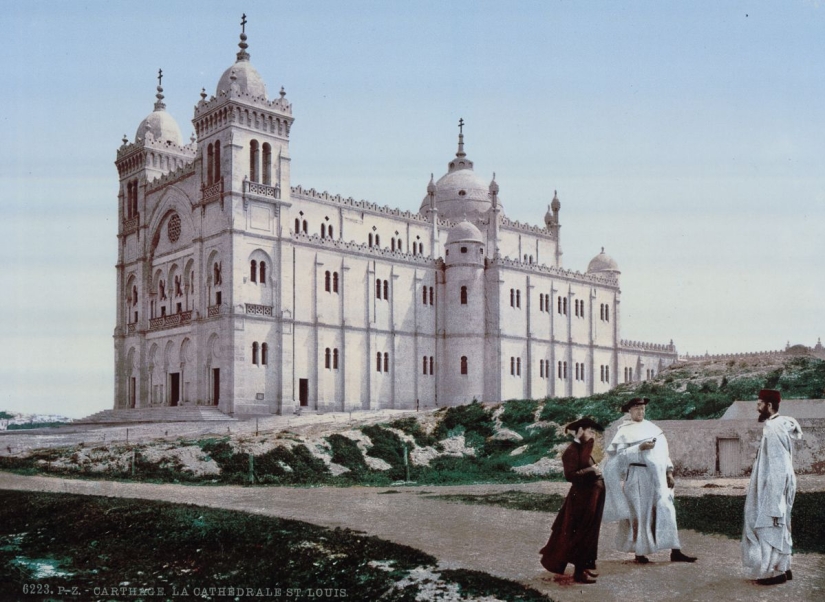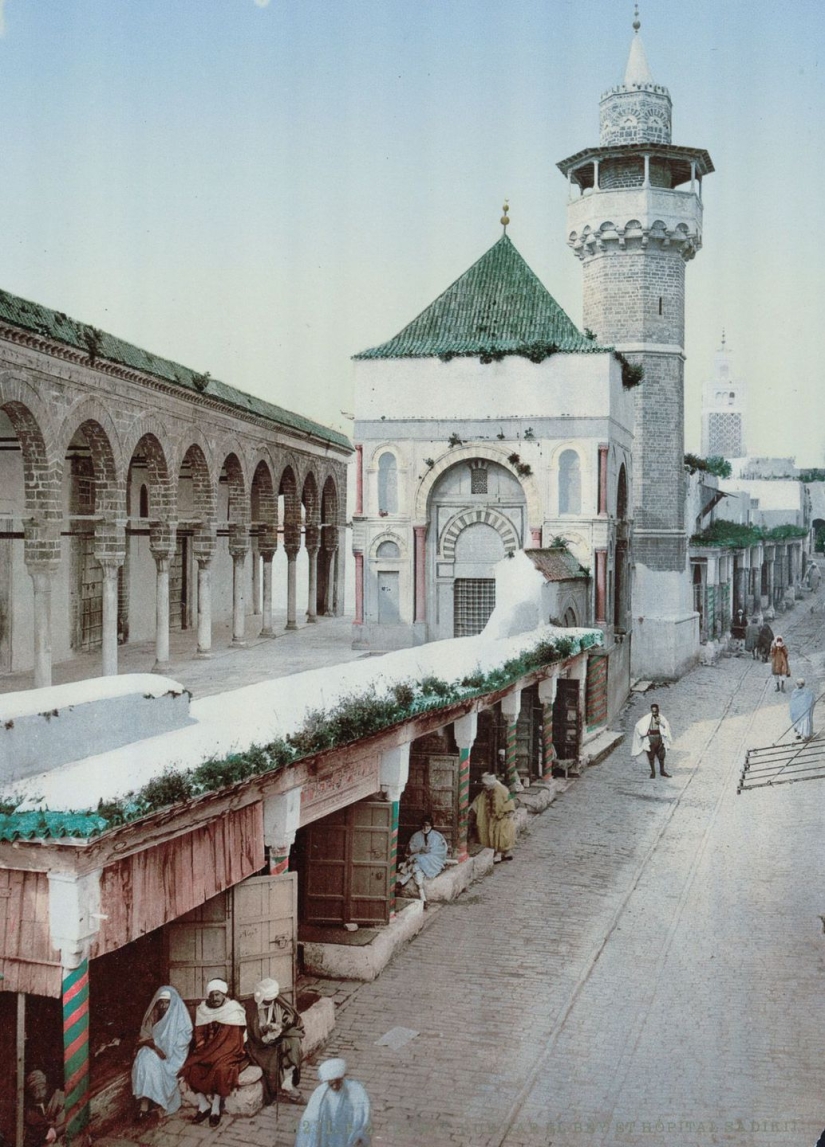Rare color shots from Tunisia at the turn of the XIX-XX centuries
Categories: History
By Pictolic https://pictolic.com/article/rare-color-shots-from-tunisia-at-the-turn-of-the-xix-xx-centuries.htmlThese color postcards from the sunny streets of Tunis were created using photochromy technology, in which monochrome images are given realistic colors and shades. This technology is the forerunner of color photography.
Photochromy (color lithography) was invented by a Swiss publisher in the 1880s. The process began with coating a plate of lithographic limestone with a photosensitive emulsion. Then it was exposed to the sun under a photonegative for several hours. The emulsion solidified in proportion to the shades of the image. The softer fragments of the emulsion were removed with a solvent, and the image remained on the lithographic stone.
The photographer carefully outlined the features of the colors in the photo. According to his notes, separate lithographic stones were prepared for each color in the final version of the image. Often there were more than a dozen lithographic stones per postcard. As a result of a complex and delicate process, incredibly colorful images were obtained with much greater accuracy than in a conventional colorized photograph.
We invite you to look at the exquisite palaces and lively markets of Tunis in the first decade of the French protectorate.
 Source: Mashable
Source: Mashable

Souk El Truk Bazaar in Tunis.

A street in Kairouan.

Tunisian locals.

St. Louis Cathedral in Carthage.

Private living room, Qasr El Said.

The bedroom of the late Bey of Tunis, Qasr El Said, Tunisia.

View of Kairouan from the minaret of the Grand Mosque.

The market in Kairouan.

Streets of Kairouan.

Kairouan.

A wandering cook, Kairouan.

The coastal area in Sousse.

View of Tunisia from the Pari Hotel.

Marr Street in Tunis.

A family of Bedouin beggars.

Near the Moorish cafe.

Bab Suika-Suker Square, Tunisia.

Throne Room of the Bardo Palace, Tunis.

The courtroom of the Bardo Palace, Tunis.

Sadiki Hospital.

Kasbah Market in Tunisia.

French Gate, Tunis.

A bazaar in Tunis.

Moorish cafe.

Ivory Market, Tunisia.

Street procession in Kairouan.

At the entrance to the mosque, Tunisia.

Performance of the snake charmer in Tunisia.

St. Catherine's Mosque in Tunis.

Sellers of couscous, Tunisia.

A group of Arabs in front of Bab Aleona, Tunisia.

A camp of nomads.

A street in Tunisia.

A Bedouin woman.
Keywords: XIX century | XX century | Postcards | Tunisia | Color photos
Post News ArticleRecent articles

Winter is a special time of the year, someone is afraid of her, someone is waiting for snow days to build a snowman or go down the ...

The heroes of their photos are used to humiliate others, cheerfully and carelessly shoot everything on the phone and post the ...
Related articles

What did the petty criminals of the XIX century look like? We offer you a look at the faces of English prisoners held in a penal ...

People have always been interested in what the future will look like and how modern technologies will develop. This was especially ...

The stunning photochromic postcards released by the Detroit Publishing Company showcase 1900s New York in all its colorful splendor.

Every day, photographers around the world are looking for new ways to tell stories or capture something we haven't noticed ...